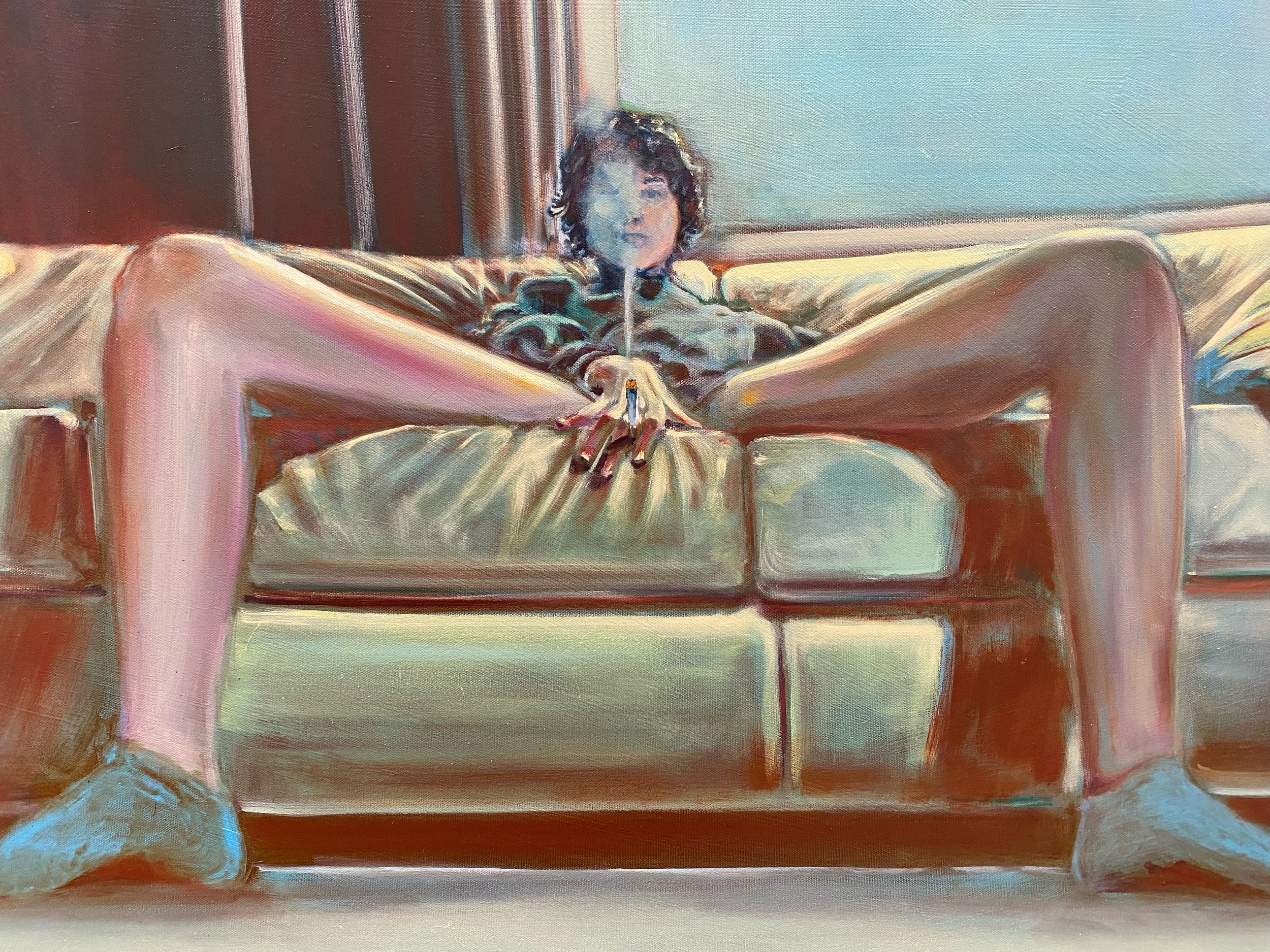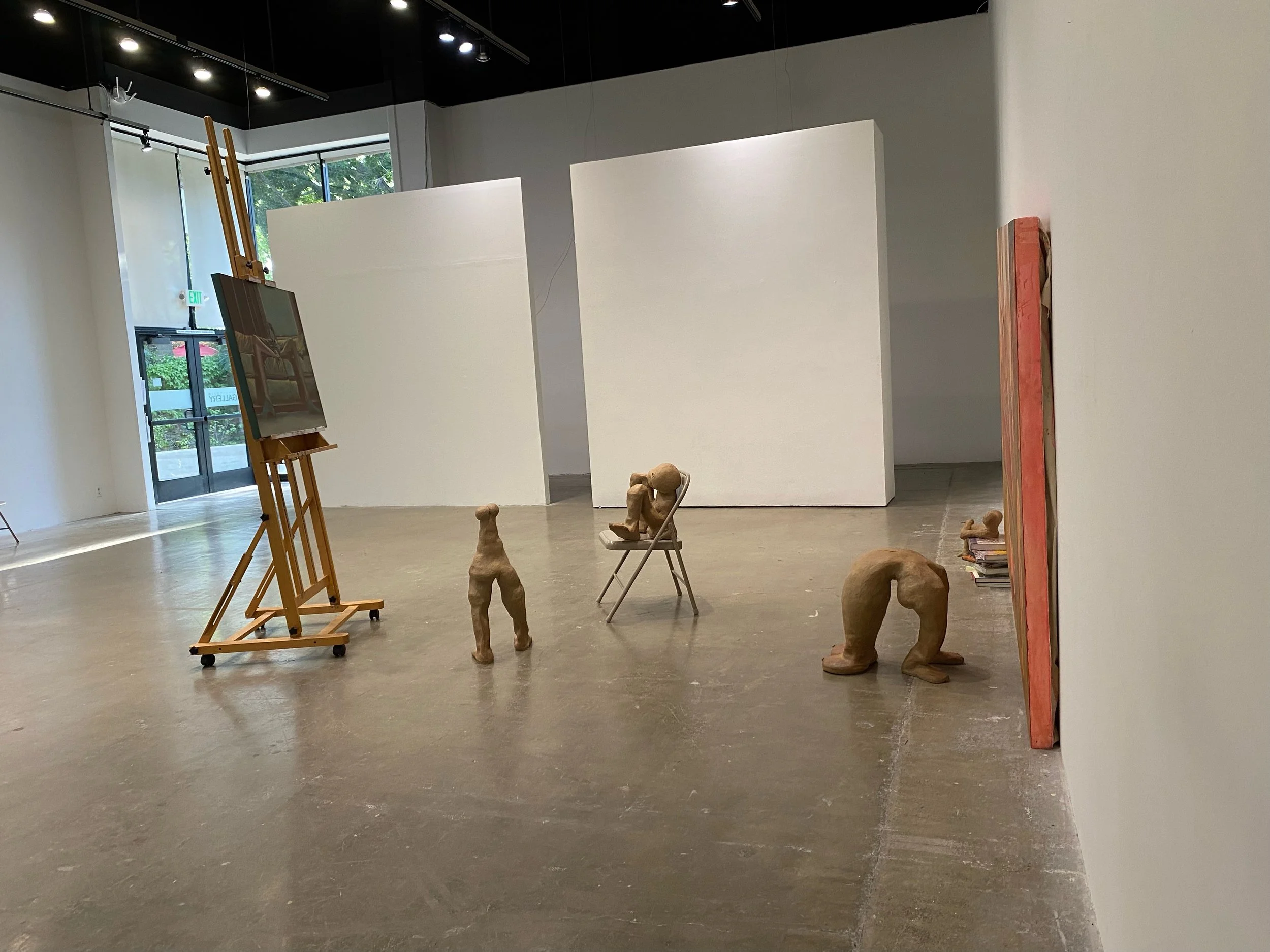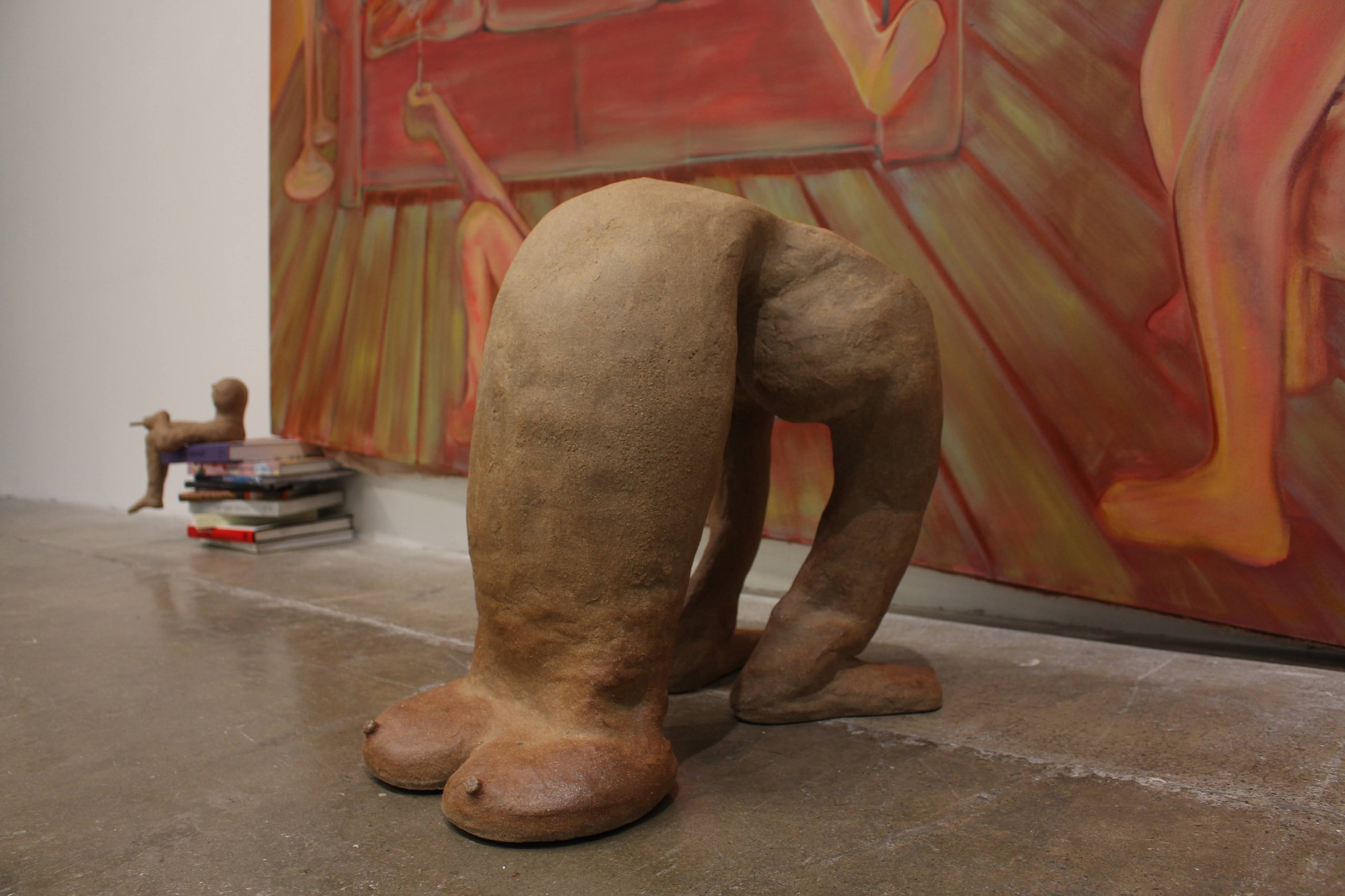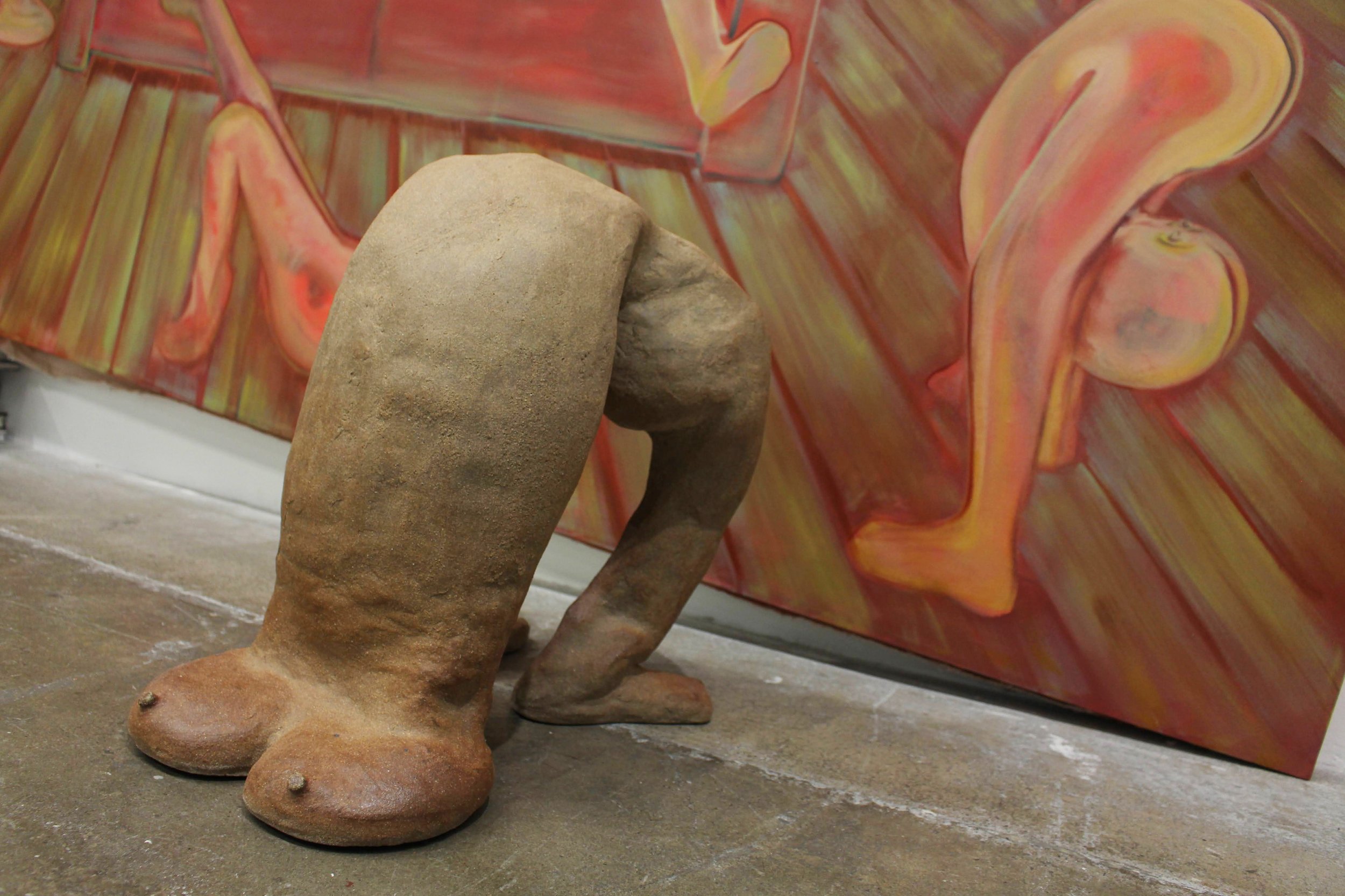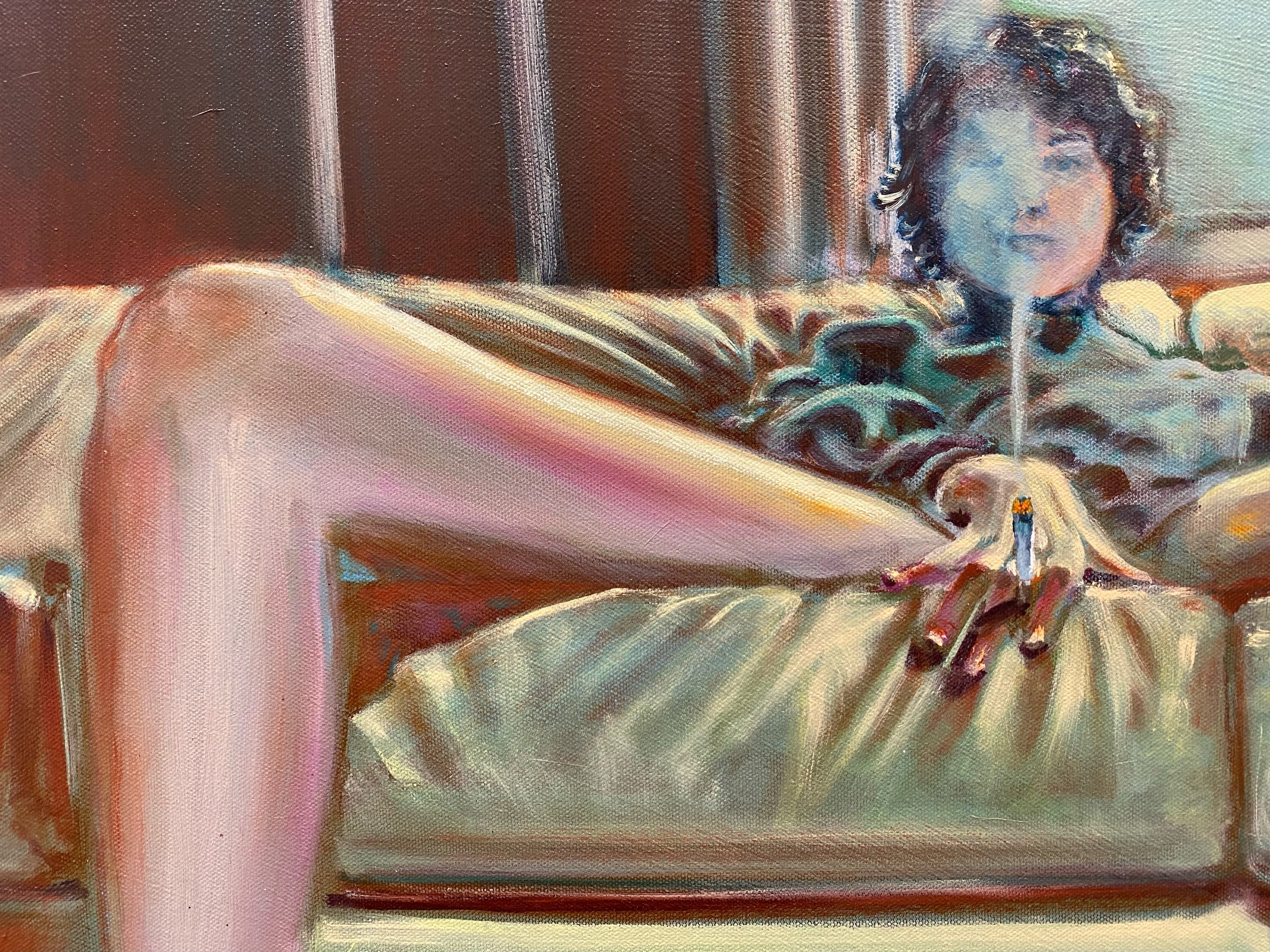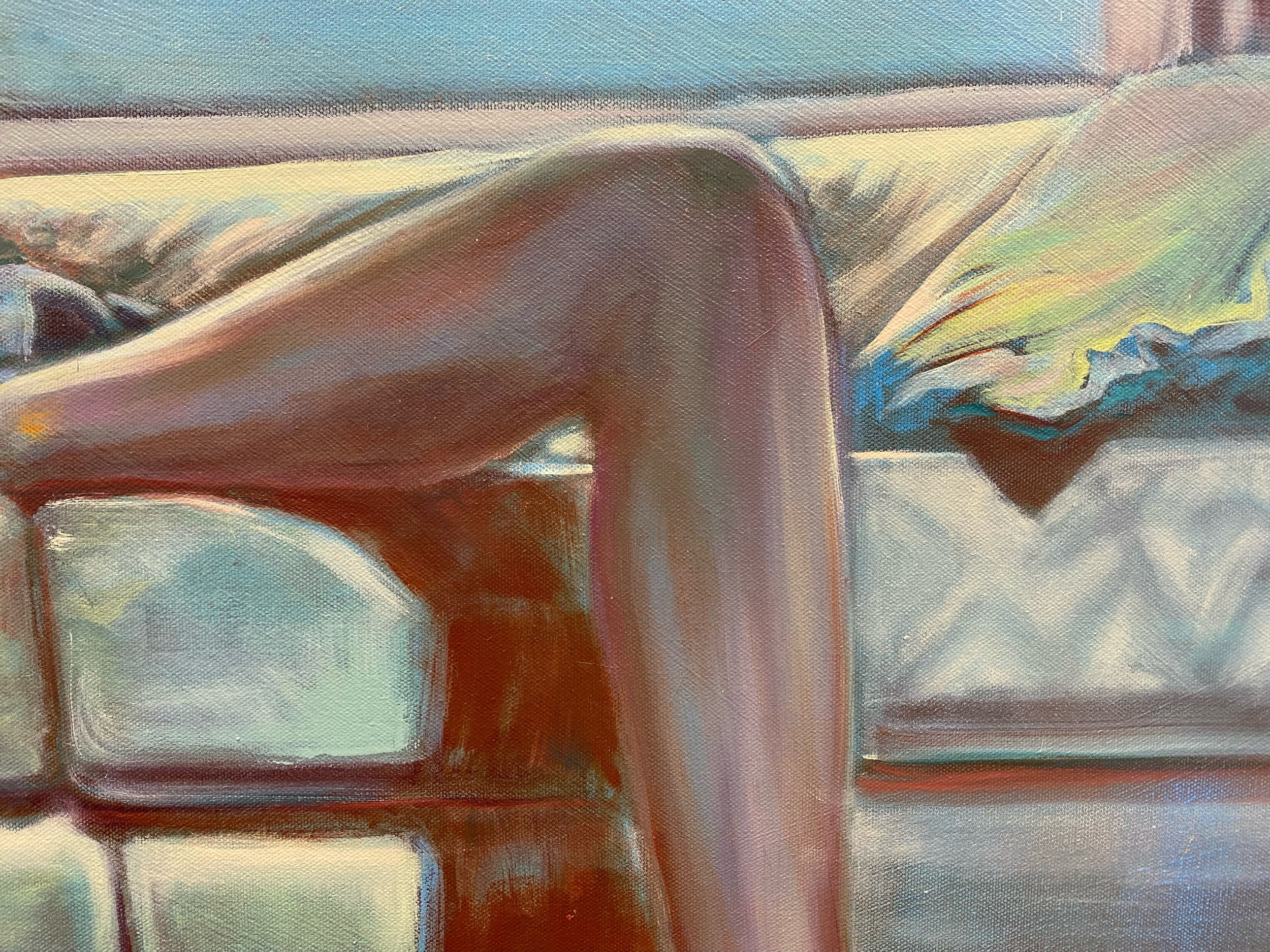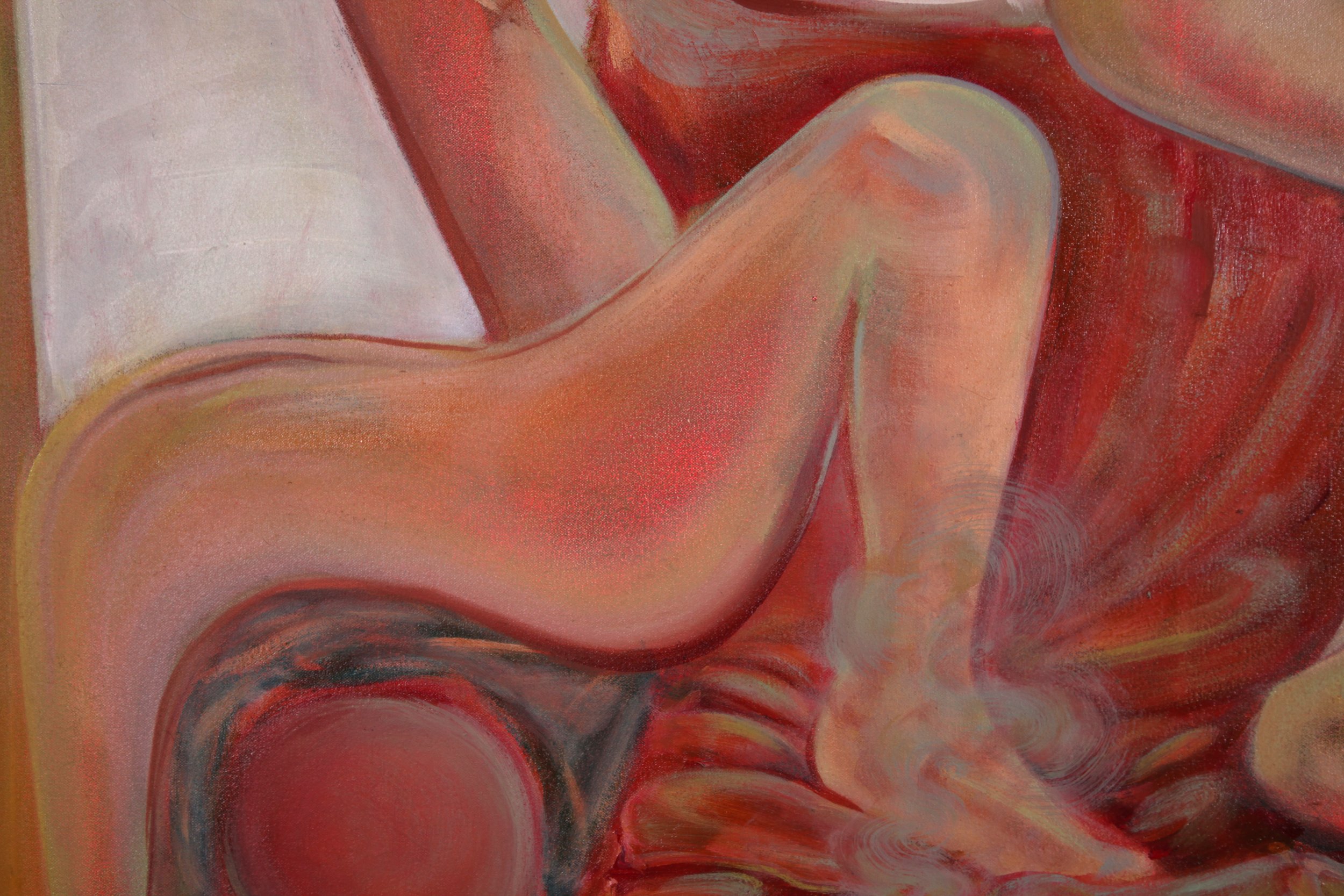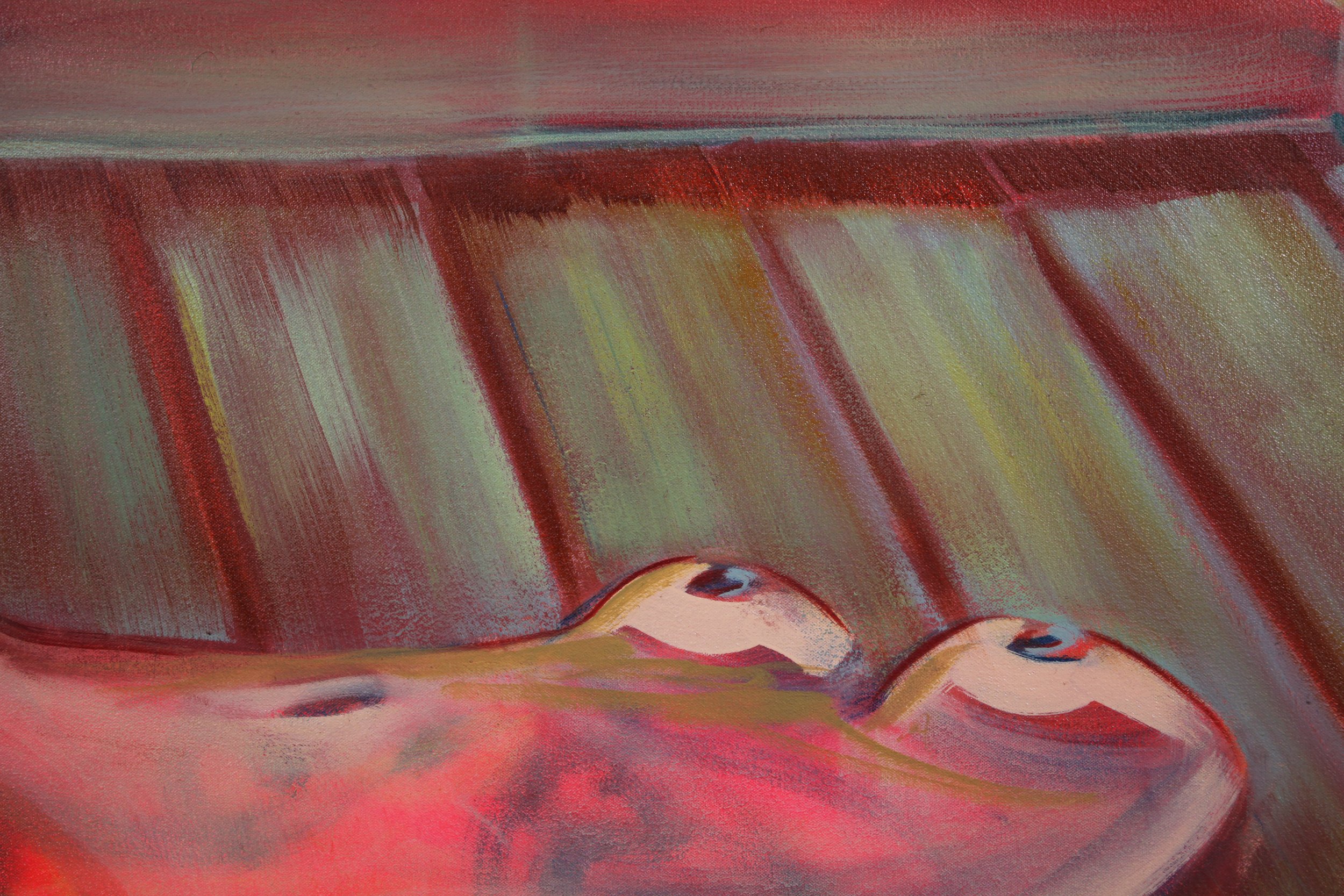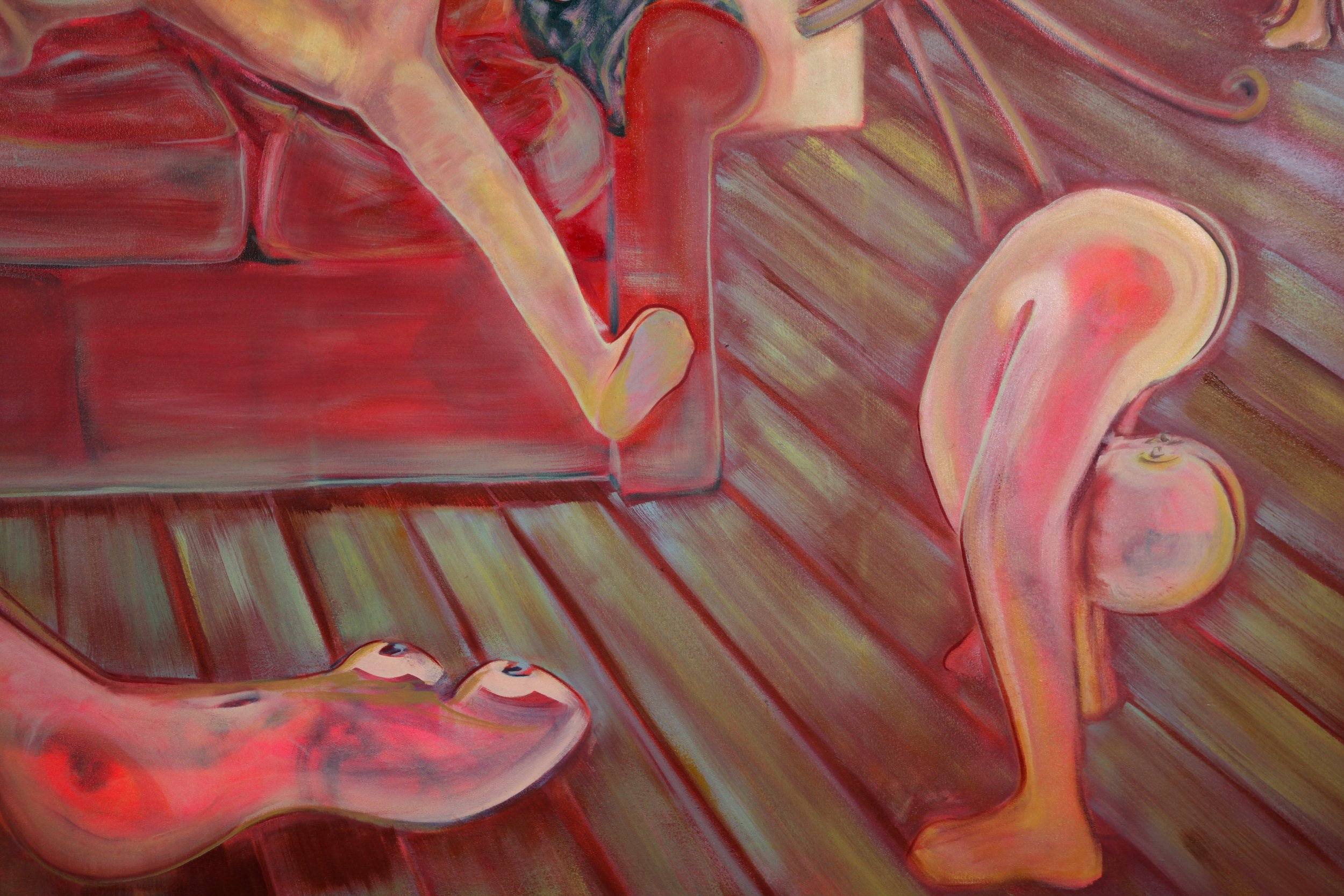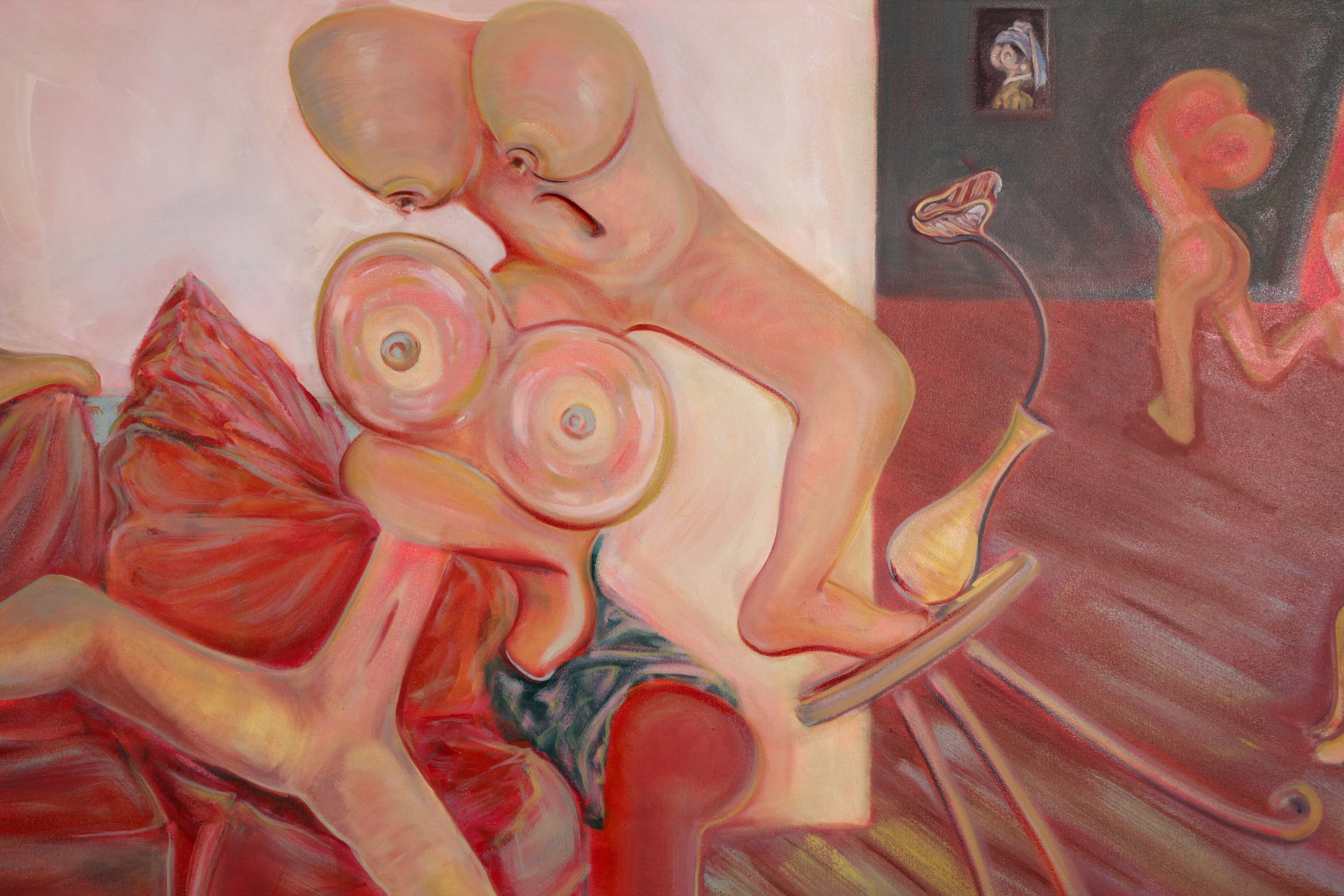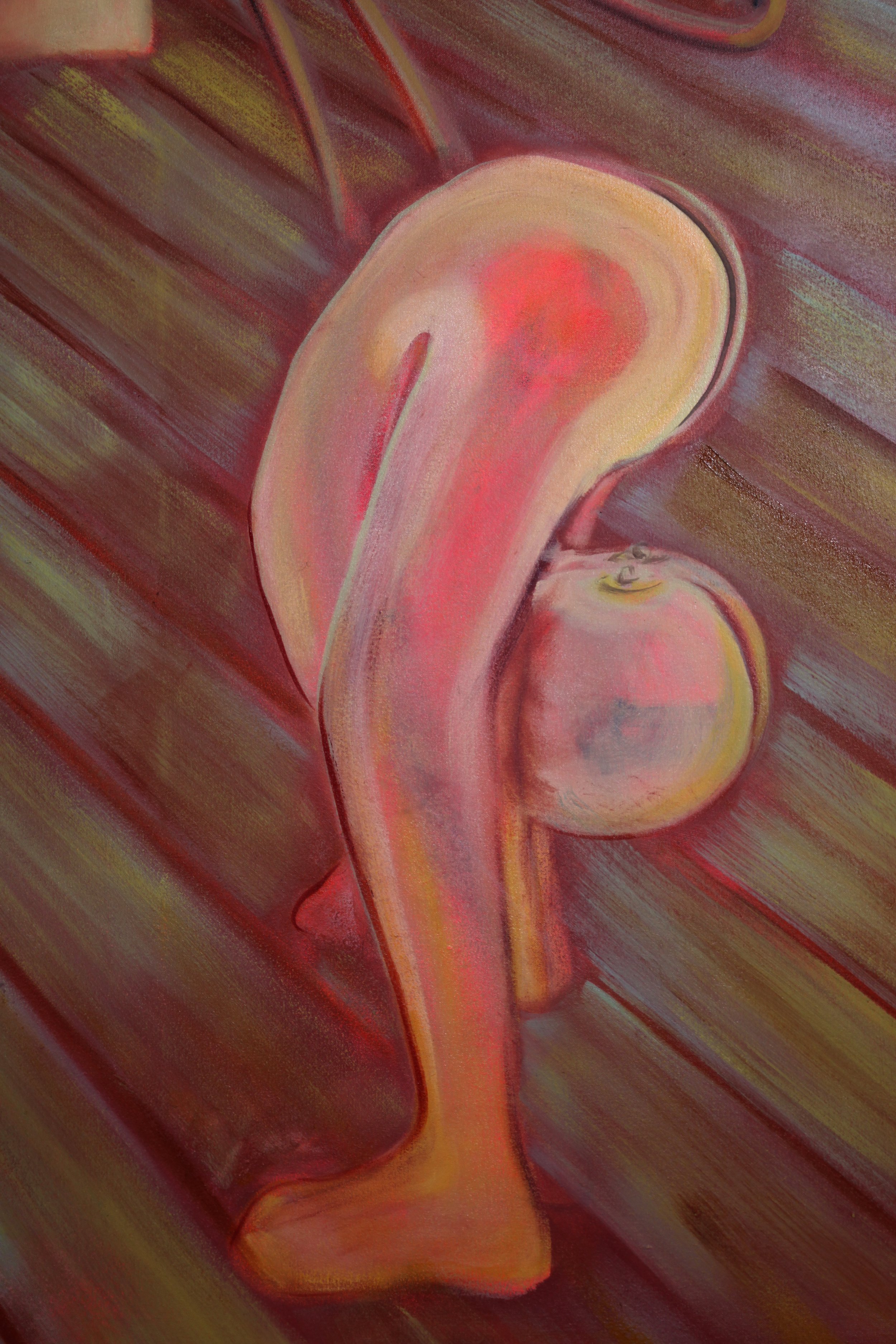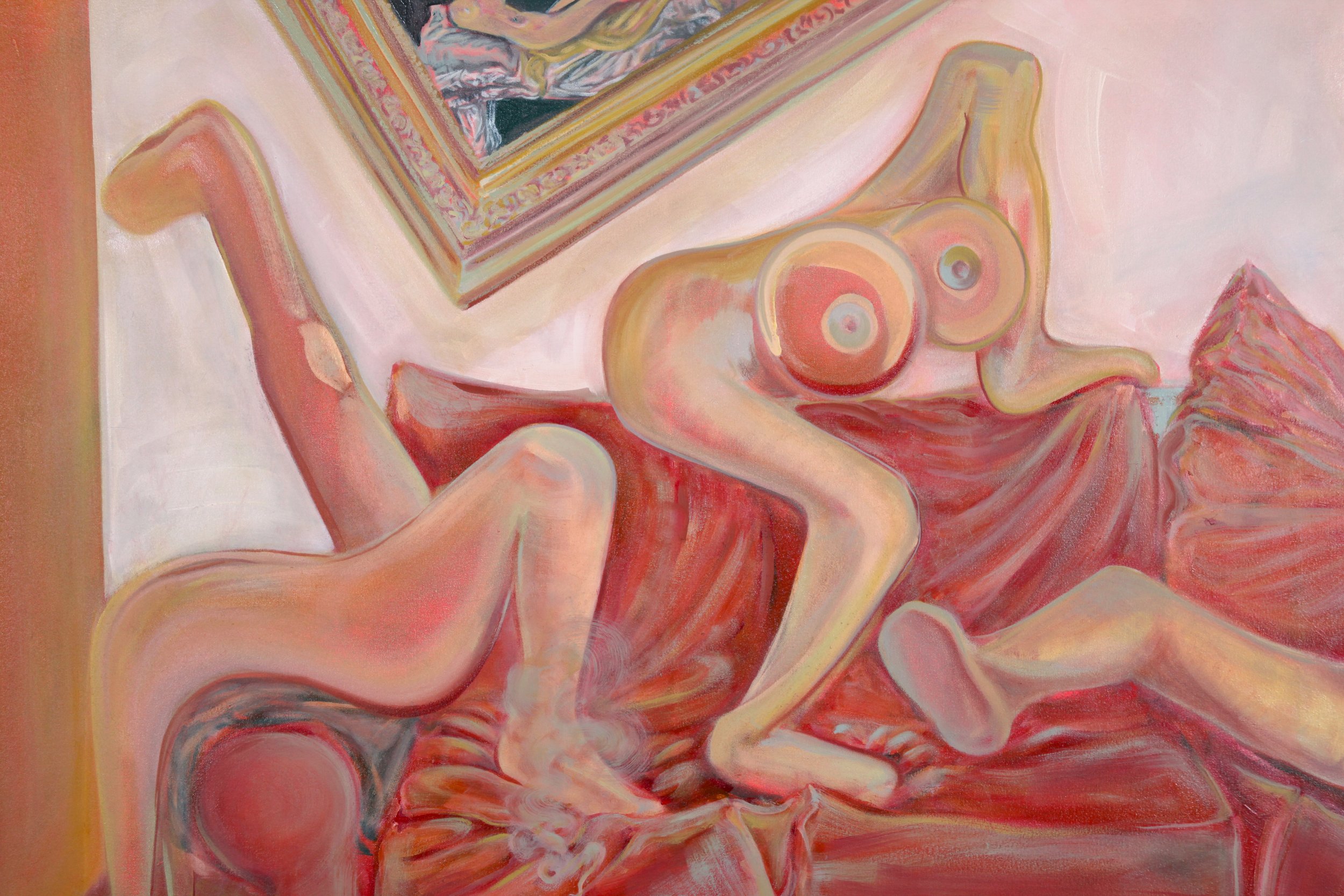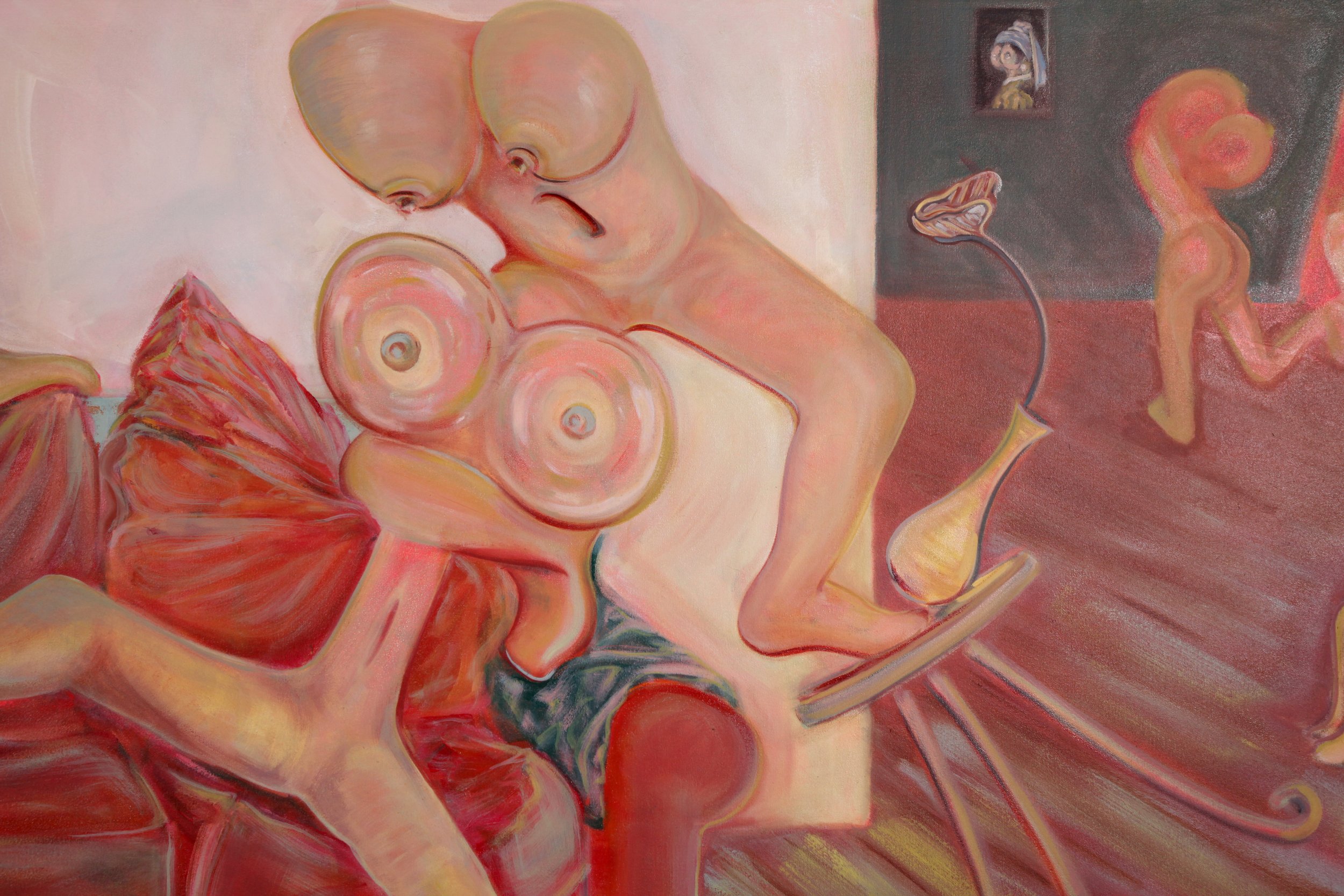Creatures of Habit: The Outbreak
“Humor is about negotiating the contradictions thrown up by convention. To a certain extent humor and seriousness are interchangeable. Otherwise, it wouldn’t be funny. Or devastating." -Sarah Lucas
This work entitled Creatures of Habit: The Outbreak investigates female representation as a personal exploration, within the context of interactive mediums of oil painting and sculptures. The installation includes one 5.5’ x 8’ oil painting, 4 sculptures, 2 stools, one 30” x 40” oil painting on an easel, as well as a stack of books. When you walk into the gallery space, the larger painting can be partially seen facing the other oil painting positioned on the easel, with the four sculptures in between. The display breaks traditional forms of gallery presentation: the large painting sits crooked on a stack of books; the artist's easel is brought into the physical space; a studio chair is placed in front of the easel alluding to the ongoing process of creation. As you walk closer to the installation, you notice the tension within the depicted scene, and wonder what the characters within the larger painting are looking at. The large painting is both alluring and disturbing, depicting headless bodies, most of which are sitting in a familiar domestic space of a sofa.
Tone is created in this painting by utilizing absurd body language: one figure appears to attack another; one crawls over the couch looking head on; one leans off the side of the couch; one inspects its own body; one holds a cigarette; one sits alone; and the last one inspects itself in the mirror. Philipe Guston was a major conceptual influence in the direction of my project; his work was censored for using absurdism to disrupt political structures. His bluntness and sarcastic humor inspired my approach to forming a critical tone through form and concept. The variation of body language demonstrates the psychological impacts of constantly being subjected to female objectification. Their heads are removed, indicating a removal of agency, and their breasts become the organs of their sight and thoughts. A bright neon pink tone emanates from under the surface, radiating a sense of agitation beneath a muted plane. The thin green layers of paint are layered on top of the oppositional pink, producing an uncanny glow.
Bethany Quarrel's use of psychedelic color palettes and subtle brush strokes to create shapes and value from thin layers of paint influenced the way I think about abstract figuration. The fleshy underpainting emanates through the surface of the characters as well as the couch, walls, and floors, making everything in the room feel alive. Most of the figures have the raw underpainting that shines directly through their bodies, creating a transparency that makes them look all the more object-like and surreal. The characters are completely dehumanized, portrayed as hollow vessels with bodies that physically and conceptually conform to the contortions to which they are subjected. Their bodies appear to be taking on different physical states: one stretches out like rubber; one partially liquifies; one contorts itself in unnatural ways to inspect its crotch.
The large painting lays crooked on the floor, its left side held up by a stack of books. These books are the biographies of influential artists that expanded my practice and propelled me to challenge the male perspectives that saturated my early recognition of art. These artists include Hilma Af Klint, Joan Mitchell, Kerry James Marshall, Philipe Guston, Frida Kahalo, Vija Celmins, and Eva Hess. The books are physically disrupting the space by lifting up a corner of the depicted room, making the canvas itself appear unstable and adding to the absurdity of the scene. The painting contains visual references to Olympia by Manet and Girl with Pearl Earring by Johannes Vermere. The figures in my painting are reinterpreted by replacing their heads with breasts to show the removal of their autonomy by portraying them as empty objects of beauty.
Kerry James Marshall's paintings, most notably Mastery, disrupts political structures through large scale narrative paintings that highlight black culture while also utilizing iconography of Disney Princesses to reveal their oppressive dominance in our social sphere. Frida Kahalo's paintings that study personal and political dynamics of her own body, Vija Celmins' photorealism, and Eva Hess's groundbreaking use of materials to create labor-intensive installations, all inspired the formal and conceptual direction of my practice.
Hilma Af Klint introduced me to the world of abstract expressionism. She was one of the first artists that taught me about the erasure of women in the annals of Art History. Joan Mitchell was another major abstract expressionist that inspired my gestural approach to painting.
The smaller painting on the easel is a self-portrait that challenges the visual power dynamics within antiquated imagery of the male gaze. The figuration in this painting is painted from a photograph and appears more realistic. The downward-facing angle of the portrait forces the viewer, and the sculptures, to be looking up at the figure on the couch.
Traditional portraiture usually presents the female body as passive, inviting the viewer to admire her delicate nakedness, with legs crossed, suggesting that her body is for the world to consume but her virginity is reserved for the man who takes it. The body language within this portrait challenges this idea by having the crotch be the physical center and converging point of the painting, the idea of female genitalia takes precedence over the appearance of my own nakedness.
The sculptures escape the gaze of the audience by jumping out of the large painted canvas and engage in an active gaze of their own toward the self-portrait on the easel. A contract is created between the bluntness of the unglazed sculptures and their delicate colors represented in the painting. The clay body anchors the characters into a physical space, abandoning their ethereal appearance and succumbing to the weight of their own bodies.
